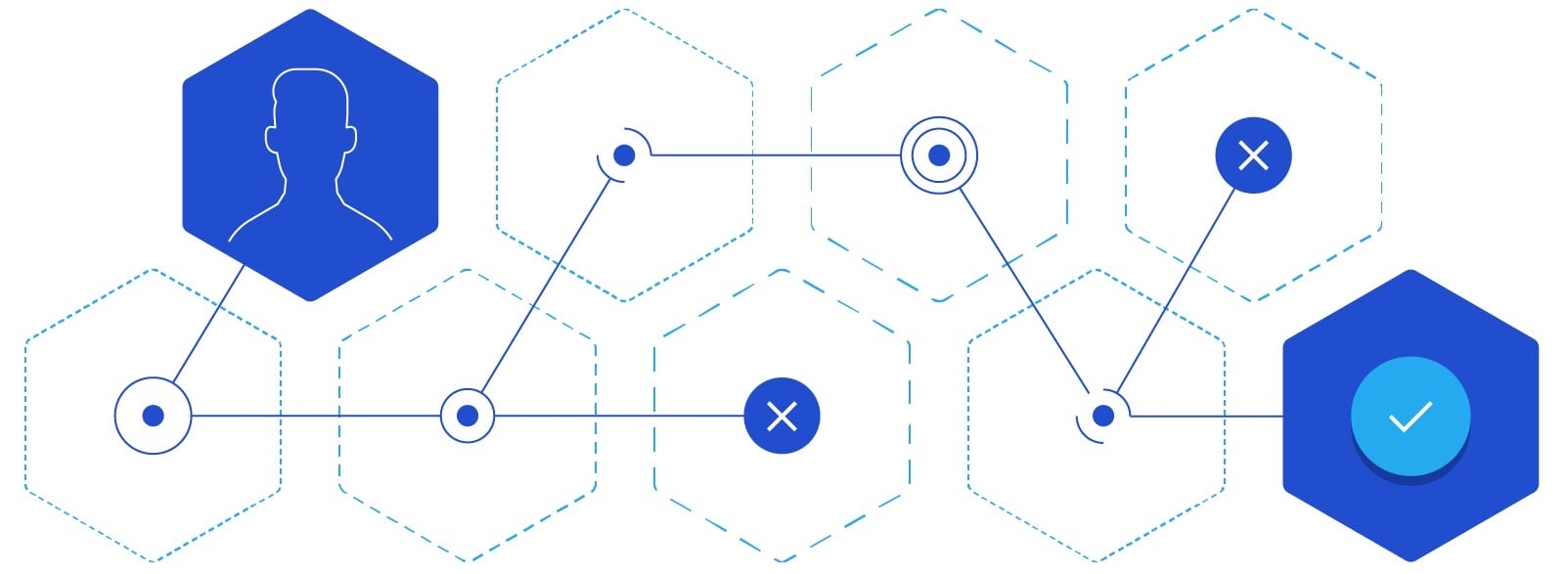Digital transformation has been a buzzword for years, marking the shift from manual systems to digital platforms like CRM software, ERP systems, and cloud-based services. Yet, despite its popularity, some critics argue that the term is either too vague, overly ambitious, or even misplaced. They suggest that Digital Evolution is a more accurate and practical term, given its distinct implications.
So, what’s in a name? Is this just a debate over terminology, or do these concepts represent different ways of navigating the digital landscape? Even more intriguingly, can Digital Evolution vs Digital Transformation coexist and possibly merge? Understanding the progression and benefits of each term and how they can impact your business can help clarify these questions.
Table of Contents
Definition of Digital Transformation
The concept of digital transformation is fluid, with various interpretations depending on who you ask. Some view it as a straightforward adoption of digital tools, while others criticize the term for creating unrealistic expectations. Given that a high percentage of digital transformation initiatives reportedly fail, somewhere between 70% and 95%, it’s valid to question the practicality and feasibility of such efforts.
To unravel this complex issue, beginning with the most basic definition of the terms involved is helpful.
What Is Digital Transformation?
In essence, digital transformation is a comprehensive change in how a business operates and delivers value to its customers, stakeholders, and employees, driven by integrating digital technologies and methodologies. It involves a radical rethinking of business processes, customer experience, and corporate culture. Digital transformation is not merely an upgrade or an addition of new technologies; it is a fundamental shift in business strategy, designed to create new revenue streams, enhance competitiveness, and improve operational efficiency. It often requires buy-in from all levels of the organization and may necessitate a change in company culture to be successfully implemented.
What Are the Challenges of Digital Transformation in the Complex Context?
To fully grasp the evolving landscape, it’s useful to examine the hurdles businesses have had to overcome in their digital transformation journeys in recent years. As highlighted by a Deloitte article, earlier digital investments primarily focused on basic elements like data modernization, technological upgrades to core systems, and automating back-office functions.

However, the game has changed dramatically due to factors such as the digital economy, the pandemic, escalating cyber threats, and geopolitical changes. The post-pandemic environment has substantially altered the playing field, escalating the urgency for businesses to pursue more comprehensive digital transformations to maintain a competitive edge. Below are some of the key challenges of Digital Transformation in this complex situation and context:
- Economic Constraints: The financial implications of the pandemic have left many businesses with restricted budgets, which can severely limit the resources available for digital initiatives. This financial crunch creates a paradox where digital transformation is essential for survival but difficult to finance.
- Customer Behavior Uncertainty: Consumer behaviors and expectations have changed dramatically through the pandemic, making it difficult for businesses to predict future trends. The uncertain landscape complicates the decision-making process in selecting the digital initiatives that will deliver the most value.
- Regulatory and Compliance Hurdles: The pandemic has also led to changes in regulations, including those related to data privacy and employee welfare, requiring businesses to adapt their digital transformation strategies to comply with new laws. The fast-changing regulatory landscape creates an added layer of complexity for digital initiatives.
- Security Concerns: With an increased dependency on digital platforms, cybersecurity risks have multiplied. From phishing scams to increased vulnerabilities from remote work setups, the security challenges have become more intricate and require more resources to manage effectively.
- Technological Evolution: The digital landscape is continuously evolving, and technologies can become outdated quickly. Flexibility and adaptability are key to ensuring that the digital transformation strategy can accommodate future technological advancements.
These new complexities and difficulties have made the process of digital transformation more challenging and disruptive for businesses. This has sparked a need to reevaluate the efficacy and approach of digital transformation initiatives.
The Effects of Digital Technology on Organizational Transformation
In the dynamic landscape of Industry 4.0, digital technologies permeate every aspect of an organization, from internal operations and customer relations to product development and marketing. These technologies enable businesses to reassess, reimagine, and reorient their strategies to navigate an increasingly digital world effectively.
Integration of Diverse Systems
Modern organizations are complex entities that operate a myriad of systems:
- Systems of Record: Such as CRMs that track customer interactions and transactions.
- Systems of Collaboration: Including communication platforms like Slack or Microsoft Teams.
- Systems of Engagement: Like customer support platforms such as Zendesk and social media channels.
- Systems of Productivity and Outcomes: Project management tools like Trello or comprehensive solutions like Microsoft 365 or Odoo.

The confluence of these various systems provides a rich tapestry of data and functionalities that enable more informed decision-making and operational excellence.
Data-Driven Transformation
One of the most significant impacts of digital technology is the capacity for data-driven operations. Organizations can now seamlessly collect, store, and analyze vast volumes of data from an array of sources—be it digital traffic, customer interactions, or operational metrics. This data can be leveraged for predictive analytics, offering insights that can guide strategies and actions in unprecedented ways.
Agility and Scalability
Digital technologies allow organizations to be more agile, and capable of rapid adjustments in response to market changes, customer feedback, or internal metrics. They also offer scalability, making it easier to grow and adapt as the organization evolves.
Enhanced Customer Experience
Customer expectations are continuously evolving. Digital technologies offer organizations tools to meet these expectations through personalized experiences, streamlined processes, and instant, effective customer service, thereby enhancing customer satisfaction and loyalty.
Competitive Advantage
In the digital arena, staying ahead of the competition involves much more than just having a better product or service. Organizations that effectively harness the capabilities of digital technologies stand to gain a substantial edge in terms of operational efficiency, customer engagement, and market responsiveness.
The Disruption in the Digital World: Digital Evolution vs Digital Transformation
The narrative around digital transformation often paints technology as an all-encompassing solution that can edge out competition and redefine business models. However, this overemphasis can sometimes turn technology into a perceived threat. Companies, ever watchful of their competitors’ moves, may feel compelled to undergo self-disruption as a preemptive measure, causing them to question their value propositions and future strategies.
Before the pandemic disrupted global economies, organizations were already committing significant resources to digital transformation, approximately $1.3 trillion annually. Unfortunately, about $900 billion of this amount didn’t produce the intended results, according to Harvard Business Review. When the pandemic hit, companies in crisis mode increased digital spending in an attempt to revolutionize their online platforms and stay afloat. However, without carefully designed long-term strategies, they found themselves in quagmires of inefficiency.

This rush towards digitalization often creates its own set of issues: overly ambitious goals, a quagmire of incremental improvements, and elongated timelines that lead to scope creep and missed deadlines. Moreover, in the hustle to adopt the latest technologies, the underlying purpose, what value it brings to the business, can become obscured.
Such scenarios validate the criticism against positioning digital transformation as the ultimate objective. Organizations are increasingly finding that such a tunnel-vision approach can actually backfire, doing more harm than good. This realization has given birth to the concept of digital evolution, a more sustainable, long-term perspective.
Rather than tearing down existing systems and starting from scratch, it’s often more prudent and cost-effective to evolve and refine what’s already in place. By adopting an evolutionary approach, organizations make better use of their resources, while allowing their employees the bandwidth to focus on next-level innovation. This is especially crucial in times of economic volatility when there’s a pressing need to maximize existing assets without incurring additional costs.
A Shift Towards Digital Evolution
What is Digital Evolution?
In essence, Digital Evolution focuses on leveraging existing digital technologies to enhance current operations. Unlike the typical narrative around digital transformation, which often suggests a complete overhaul of existing systems, the evolutionary approach refines what’s already in place. This model reemphasizes the original intent of digital transformation by spotlighting the why, and the ultimate objectives, rather than merely the what, the changes to be made.

This results in a more incremental and gradual strategy, aiming to introduce changes that can seamlessly integrate into the organization’s current state. Such alterations aim for tangible improvements in productivity, efficiency, and overall business value. The driving principle here is the realization that technology in itself is not the magic wand; it’s the utility it brings to business operations that actually matters. In simpler terms, the value doesn’t stem from the technology itself but from the new capabilities it unlocks and the unique advantages it bestows on the business.
Advantages of Digital Evolution
Digital evolution offers a host of benefits that can redefine the way businesses operate, interact with customers, and achieve long-term success. In the comparison between the all-or-nothing approach associated with digital transformation vs digital evolution, this approach provides a more sustainable, step-by-step strategy for improving performance and adding value. Below are some of the most compelling advantages of embracing digital evolution in your organization:
Incremental Progress
Digital evolution allows for gradual improvements, enabling organizations to test new technologies, methodologies, and procedures on a smaller scale before full-scale implementation. This incremental approach minimizes risk and makes it easier to measure the impact of each change.
Enhanced Agility
In today’s fast-paced business environment, being agile is a critical advantage. Digital evolution fosters agility by allowing companies to rapidly adapt to market changes, customer demands, or competitive pressures without undergoing a complete transformation each time.
Cost-Effectiveness
Starting from scratch can be a costly venture, both in terms of finances and resource allocation. In contrast, digital evolution focuses on optimizing existing processes and systems, thereby significantly reducing implementation costs. It also allows organizations to maximize the return on their existing investments.
Improved Employee Engagement
By evolving existing systems and processes, employees do not have to adapt to entirely new platforms, which can often lead to resistance or decreased productivity. Instead, they can continue working with familiar tools while benefiting from incremental improvements, leading to better engagement and job satisfaction.
Customer-Centric Growth
Digital evolution provides the flexibility to adapt to customer preferences and market trends in real time. It allows businesses to introduce customer-focused innovations continuously, thereby improving user experience and fostering customer loyalty.
Better Risk Management
Introducing changes gradually allows for real-time monitoring and immediate adjustments, helping to identify and mitigate risks early in the process. This adaptive approach is far superior to the all-or-nothing transformations that can leave organizations exposed to significant risks.
Future-Proofing Your Business
By adopting an evolutionary approach to digital technology, organizations can more readily incorporate emerging technologies and methodologies as they develop, without requiring another complete transformation. This makes it easier to stay ahead of competitors and align with future market demands.
Key Differences Between Digital Evolution vs Digital Transformation
Understanding digital evolution also involves grasping the financial nuances that differentiate it from conventional approaches to digital transformation. Traditional digital transformation projects often involve hefty upfront investments, lured by the promise of rapid and dramatic results. However, the urgency to deliver quickly can lead to inflated budgets and projects that ultimately fail, falling into the staggering 80% of initiatives that get scrapped.
In contrast, digital evolution advocates for a more measured financial strategy, focused on sustainable, long-term investment. The approach aims to achieve 70% functionality within the first few months, followed by a gradual rollout of the remaining 30% over an extended period. This allows for the assimilation of feedback and fine-tuning, contributing to the project’s longevity and success.
Additionally, digital evolution vs digital transformation are different in many other aspects. Below is a detailed comparison to help you understand their nuances and make an informed choice for your business strategy.
Focus
Digital Transformation often seeks to revolutionize how an organization operates. It aims for a rapid overhaul, looking to achieve set objectives within a limited time frame.

Digital Evolution, conversely, adopts a more organic development model and discovers the evolution path for corporate development. It aims for constant adaptation and growth, focusing more on the journey than a set end-point.
Risk Management
Digital Transformation inherently involves higher risks, given its all-or-nothing nature. If the transformation fails, the financial and operational consequences can be severe.

Digital Evolution minimizes these risks by allowing for iterative processes and adaptability. Failures in smaller projects can serve as learning opportunities, rather than devastating setbacks.
Flexibility
Digital Transformation often works from a pre-defined scope and set of objectives. Any deviation or scope creep can derail the entire project.

On the other hand, Digital Evolution is designed for flexibility. The methodology allows for changes in strategy as the landscape evolves, ensuring that the business remains agile and responsive.
Employee Engagement
In Digital Transformation, new technologies and processes are usually imposed on employees, requiring them to adapt quickly. This can lead to resistance and low morale.

Digital Evolution integrates change more naturally into the workflow, often involving employees in the decision-making process. This makes the transition smoother and engenders a more positive, inclusive work culture.
Customer-Centricity
While the intention is to improve customer experience, the focus of digital transformation can often shift to technology, leaving the customer as an afterthought.

Conversely, digital evolution always puts the customer at the forefront and center. Every incremental change aims to improve customer experience directly or indirectly and is often based on customer feedback.
As we navigate the post-pandemic landscape, companies need to pivot away from the once-popular but now increasingly criticized paradigm of digital transformation. Shifting towards a digital evolution mindset ensures that businesses grow at a consistent yet adaptable pace, always keeping customer service and a people-centric approach at the forefront.
This approach not only fosters success but also makes it sustainable, reinforcing the argument that digital evolution, rather than transformation, should be the strategy of choice for modern enterprises.
In Conclusion,
Choosing between digital evolution vs digital transformation isn’t merely a game of semantics, it’s a crucial decision that impacts your organization’s future and its relationship with customers. While digital transformation can offer groundbreaking changes, its high upfront costs, considerable risks, and potential for disruption make it a challenging path to tread. Digital evolution, with its customer-centric, agile, and incremental approach, often serves as a more practical and sustainable pathway for most organizations.
The post-pandemic business landscape demands adaptability, efficiency, and above all, a keen focus on enhancing customer experience. By understanding the nuanced differences between digital evolution and digital transformation, you can make more informed, strategic decisions that serve your long-term goals and resonate with your customer base. After all, in today’s hassle and ever-changing digital world, evolution may not just be a choice, but a necessity for survival. If you’d like to receive informative updates from us, please subscribe to our newsletters right below.











